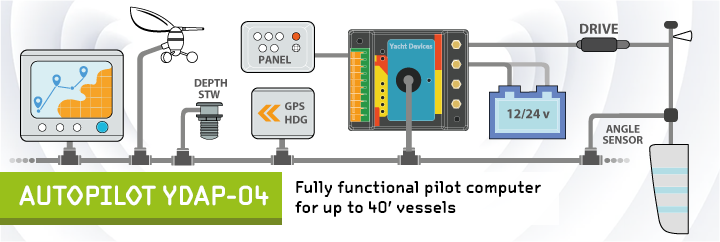
The NMEA2000 Autopilot YDAP-04 from Yacht Devices is as a pure NMEA 2000 autopilot that is not locked to proprietary sensors or pilot heads. Designed for vessels up to 40 feet or 12 tonnes displacement.
The NMEA2000 Autopilot YDAP-04 can control a hydraulic pump or a reversible linear drive with electric clutch, providing 10A maximum continuous current (16A peak) operating from 12/24 volt supply.
The NMEA2000 Autopilot YDAP-04 can be operated in three different autopilot modes depending on the data available on the NMEA 2000 network.
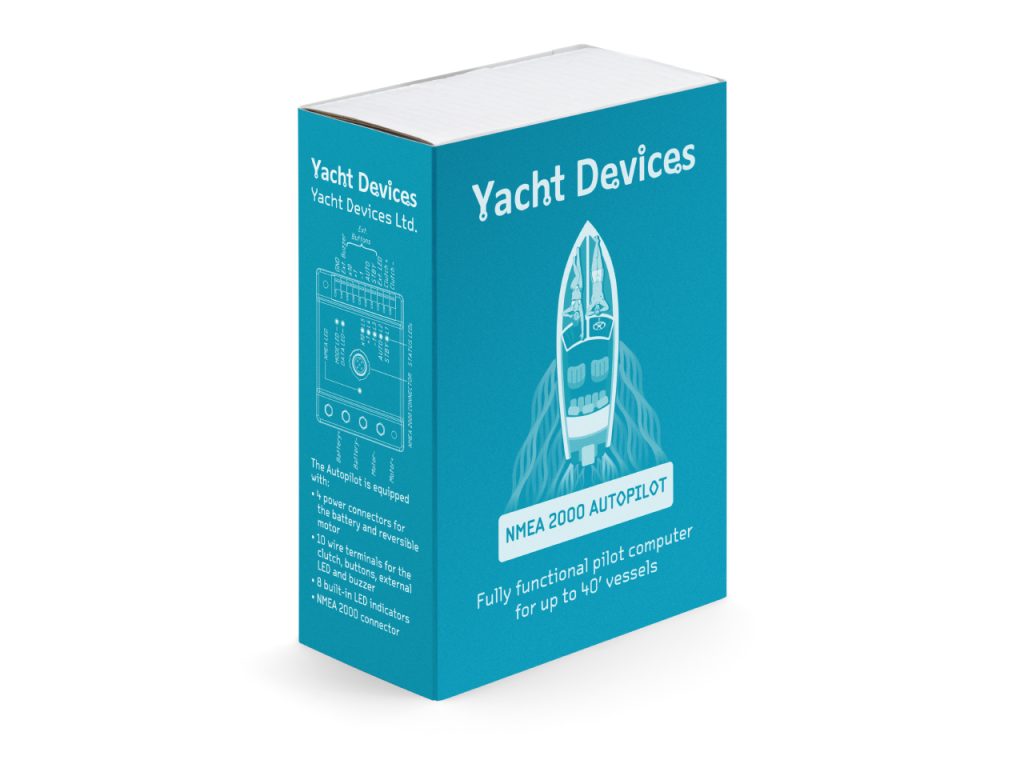
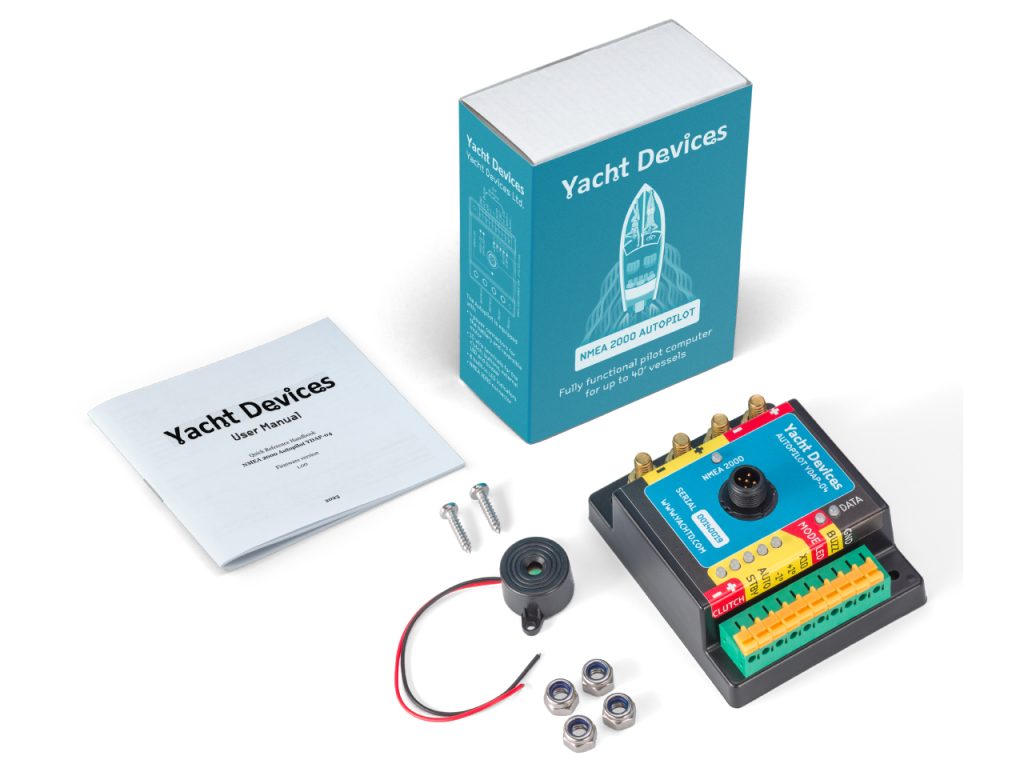
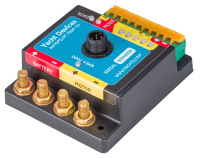
AUTO Mode
In this mode the autopilot sends commands to steer your vessel at a given course. To activate this mode, turn vessel to desired heading and briefly press the AUTO button and the autopilot will take all necessary action to maintain that heading.
Requirements to operate:
- Rudder Angle data on NMEA2000 network. (If not already available, may use Yacht Devices Rudder adaptor YDRA-01 to capture feedback onto NMEA2000 network)
- Heading Data on NMEA2000 network
- At least 2 buttons wired to the YDAP-04 autopilot to engage AUTO and STANDBY modes.
WIND Mode
Holding the AUTO button for 1 second will enable WIND mode.
Requirements to operate:
- Rudder Angle data on NMEA2000 network. (If not already available, may use Yacht Devices Rudder adaptor YDRA-01 to capture feedback onto NMEA2000 network)
- Heading Data on NMEA2000 network
- Magnetic variation
- 5 buttons wired to the YDAP-04 autopilot to engage and control mode.
- Wind Speed and direction data on NMEA2000
- Optional water speed (STW or COG/SOG) can be used to calculate the wind vector for averaging.
TRACK Mode
This mode allows a chart plotter or navigation program to control the autopilot. It will steer the vessel to or slightly ahead of the nearest waypoint to smooth out the boat’s path.
Requirements to operate:
- Rudder Angle data on NMEA2000 network. (If not already available, may use Yacht Devices Rudder adaptor YDRA-01 to capture feedback onto NMEA2000 network)
- Heading Data on NMEA2000 network
- Magnetic variation
- 5 buttons wired to the YDAP-04 autopilot to engage and control mode.
- Wind Speed and direction data on NMEA2000
- COG/SOG
- Current track data (Navigation Data and Cross Track Error) from MFD or navigation software
Typical usage scenarios
Control via physical buttons

You can install the autopilot control panel with physical buttons directly connected to the autopilot as shown.
This method is suitable when the chart plotter does not allow autopilot control or it is not installed at all. In this case, we recommend the use of the LED and audible indication functions to be wired as well.
Control with Web Gauges

The web gauges provide a more convenient autopilot control. You need only install the physical button for STANDBY.
You can use any IP based gateway from us (Ethernet, Wi-Fi, Router). We recommend the YDWG-02 to allow easy use of your mobile phone or tablet to control the autopilot from the Web Gauges preconfigured autopilot control page.
Calibration and Setup
We highly recommend the purchase and use of a NMEA2000 gateway to ease with fine tuning and troubleshooting. You can use any of the IP based gateways available (Ethernet YDEN-04, Wi-Fi YDWG-02)
This allows the use of the free CANLog viewer software (shown below) to commission, troubleshoot and update firmware.
Due to the importance of having a reliable and trustworthy autopilot onboard, we recommend engaging a suitably qualified marine installer to install and configure this solution. We encourage you to review the installation manual (available below) to familiarise yourself with the Autopilot prior to reaching out to us for help.
We are happy to answer pre-purchase questions and also bundle other Yacht Devices products into the purchase to help you save. Please contact us with any questions.
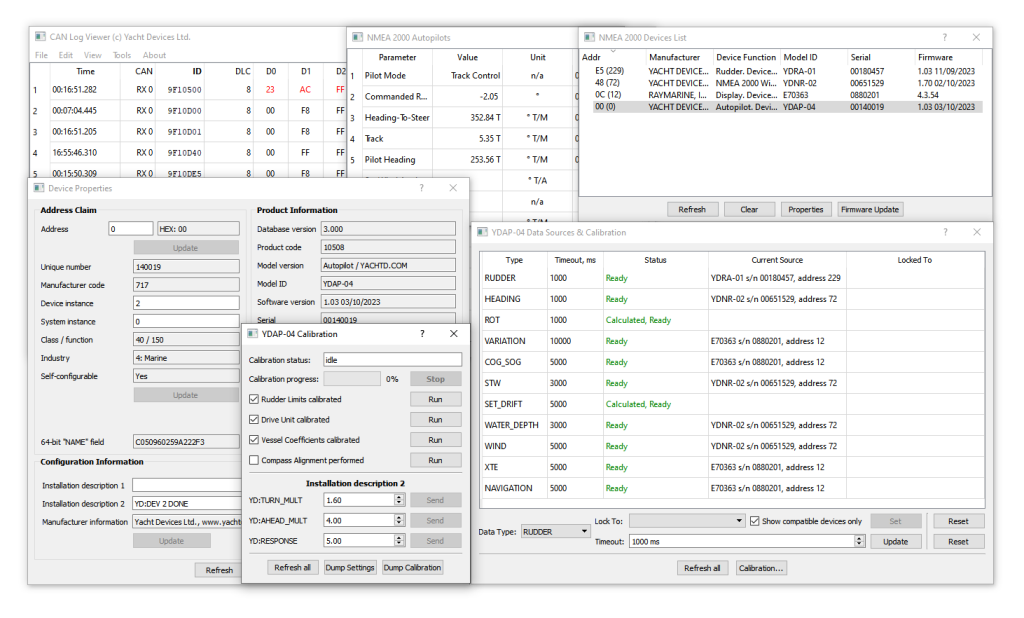
Examples of what to expect
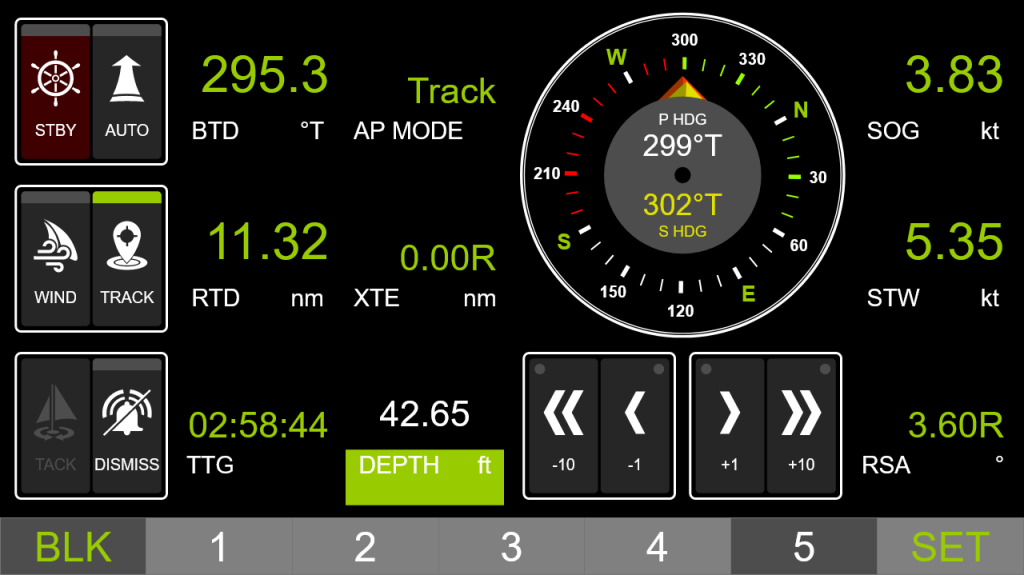
Shown left is the view from the preconfigured Web Gauges available when using the Wi-Fi Gateway or Ethernet Gateway.
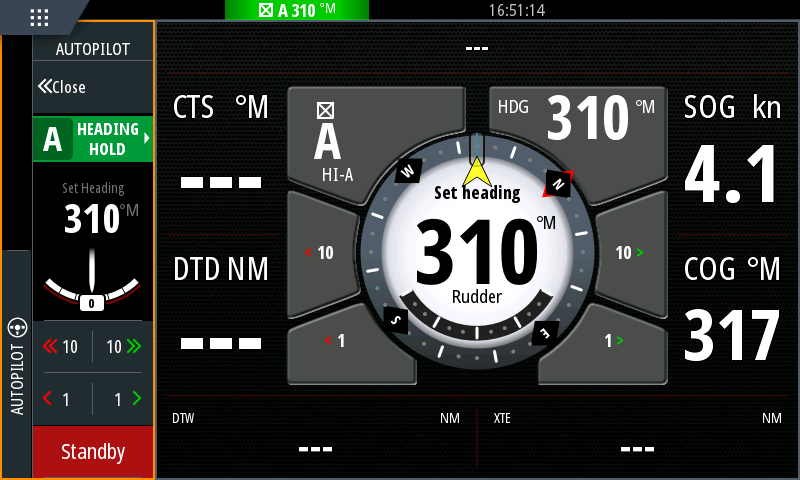
Simrad MFD shown working with the YDAP-04 Autopilot
Users manual and schematics

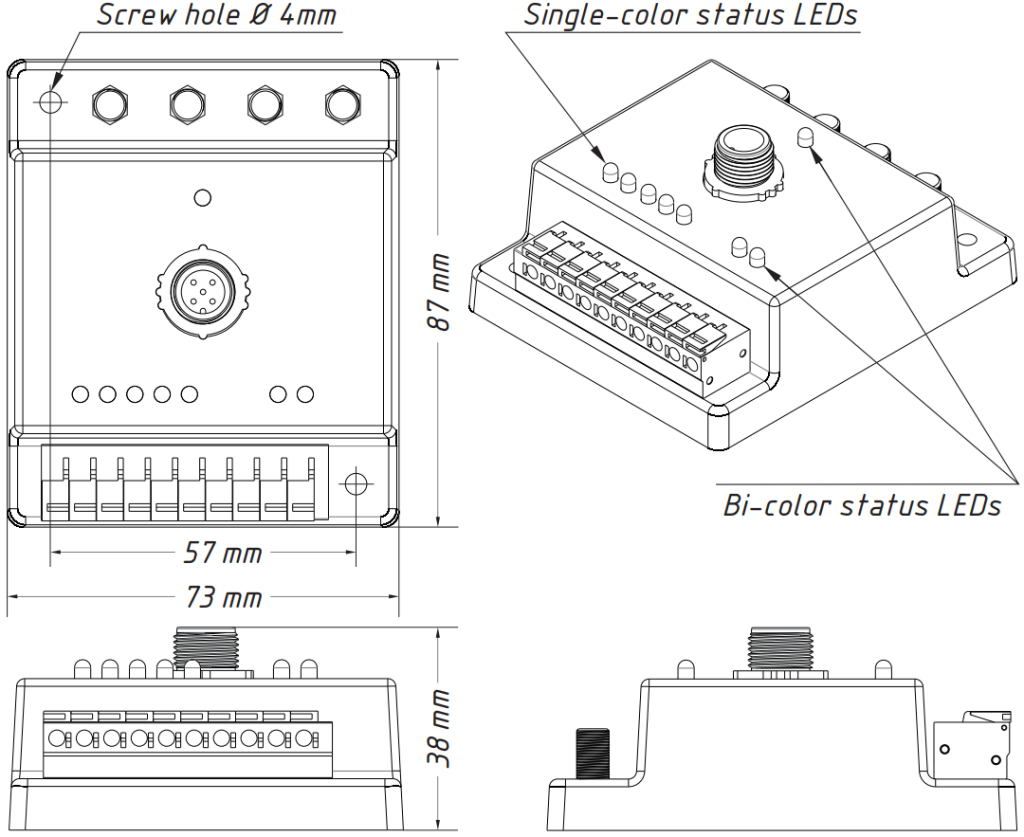
Manufacturers product page – NMEA2000 Autopilot
Follow us on Facebook
